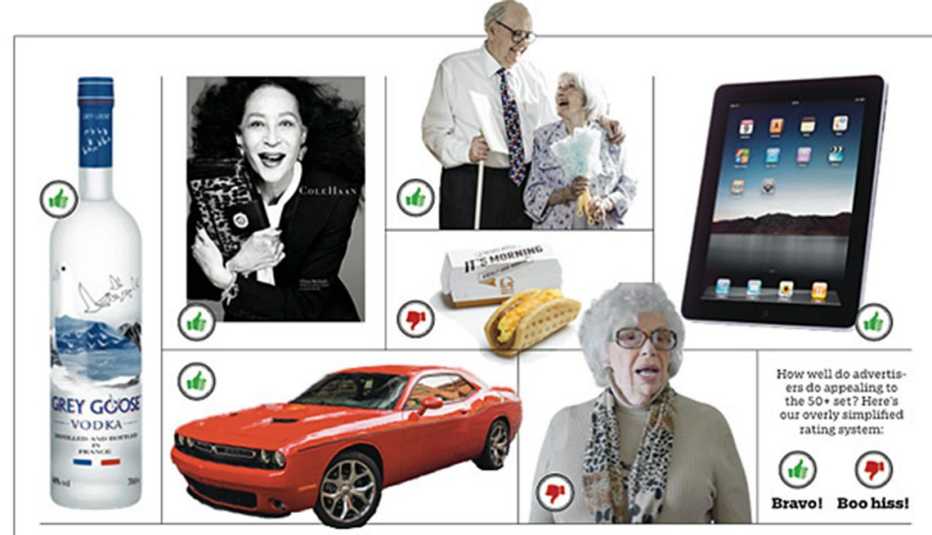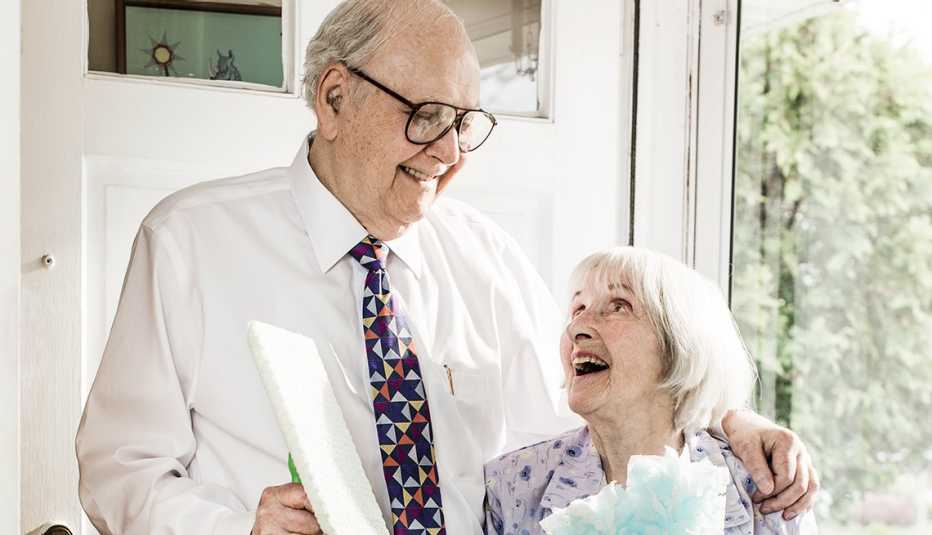AARP Hearing Center


A recent television commercial for Esurance introduces viewers to Beatrice, a gray-haired woman with oversized glasses and an unfashionable scarf who is identified as an "offline over-sharer." Beatrice brags to two friends that she saves 15 percent in 15 minutes on her car insurance — as well as "a ton of time" posting her vacation photos on her "wall" rather than mailing them. She actually has taped snapshots all over her living room wall.
When one friend counters that she saves more than that in half that time (presumably from Esurance), Beatrice is miffed. "I unfriend you," she blurts out.
"That's not how this works. That's not how any of this works," groans her friend, before the narrator introduces Esurance and the company's slogan: "Welcome to the modern world."
Get it? Though 28 million people over 55 already subscribe to Facebook and boomers buy twice as much online as younger adults, according to Forrester Research, cranky, befuddled Beatrice can't fathom social media.
Responding to complaints about the spot, Ellen Hall, a blogger for Esurance (which vows in its mission statement to make "people's lives a little better — by valuing our customers"), wrote in a post that the ad's intent "is to show that it can be difficult to keep pace with technology these days (no matter your age)."
Negative stereotypes
But the company's underlying message is that your elders are idiots, so buy our product to be cool and not like them. The campaign amounts to a self-inflicted wound, given that consumers over 50 buy nearly five times as many new cars (which require insurance) than does the prized 18-to-34 demographic.
Chuck Schroeder, 71, founder of Senior Creative People, a consulting firm that specializes in communicating with mature consumers, worries that many advertisers depict older adults as decrepit Luddites "still looking at their VCR flashing '12,' on and off."
As an example, he cites Taco Bell's new spokes-codgers, Harold and Lenny, who evoke Statler and Waldorf, the grumpy Muppets in the theater balcony.
"Today they're eating Waffle Tacos, tomorrow they're loitering," warns Taco Bell's schlubby pitchman. Of course, he sits on a park bench and wears a hearing aid. Meanwhile, attractive millennials eat "next-generation" breakfast sandwiches nearby. Restaurant industry analyst Technomic Inc. estimates that nearly 1 out of 5 of the fast food chain's regular customers are 55 and older, but never mind them.
Brainwashed by the culture
Taco Bell and Esurance are outliers; far more advertisers commit sins of omission, ignoring the 50-plus demographic. "Older people are kind of written off by advertisers, as if these people are not important [and] don't buy anything," says Dilip V. Jeste, associate dean for healthy aging and senior care at the University of California, San Diego. "It's unfortunate that older people themselves buy into it."
The 50-plus market that many advertisers ignore or insult is not big: It is enormous. According to a Nielsen study, by 2017 boomers will control 70 percent of the country's disposable income. From 2007 to 2010 — tough economic times — retirees were one of the few demographic groups to experience stable or rising incomes. Nearly 60 percent of homeowners over 65 are not weighed down by mortgages, compared with just 11 percent of 35- to 44-year-olds. And boomers account for 80 percent of America's luxury travel spending.


































































More From AARP
Ageism Is Alive and Well in Advertising
Consumers 50+ perceive a marketing bias against them
Feds Crack Down on Medicare Advantage Marketing
Celebrity endorsers must identify whom they represent and not mislead potential MA enrollees
Nearly 2 Out of 3 Women Age 50-Plus Regularly Face Discrimination
AARP survey reveals that many women face biases, putting them at risk for mental health issues